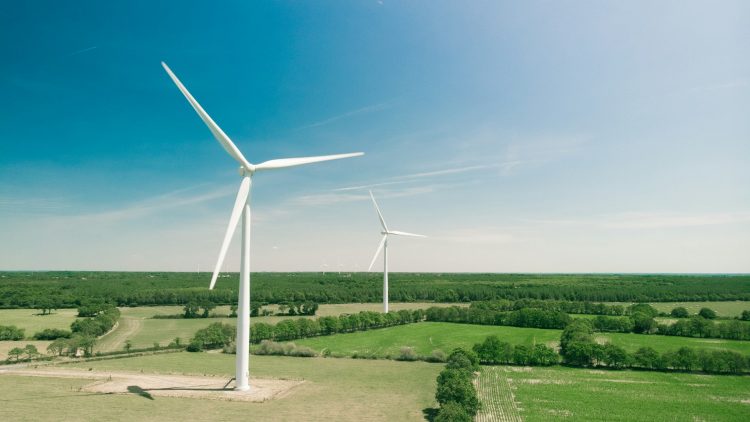India’s commercial and industrial (C&I) sector stands at a critical juncture in its energy journey. As India aims to reduce its carbon footprint and achieve ambitious renewable energy targets of 500 GW non-fossil fuel capacity by 2030, the C&I sector emerges as a key player in this transformative shift. With escalating energy costs threatening operational efficiency and global markets increasingly prioritising sustainability, the urgency for C&Is to transition to renewable energy has never been greater.
This transition isn’t just an environmental imperative; it’s a strategic business decision offering multifaceted benefits—from substantial cost savings and improved competitiveness to enhanced brand reputation and long-term sustainability. As we delve into the compelling reasons for this shift, it becomes clear that the C&I sector’s proactive embrace of renewable energy is not only crucial for their own success but also pivotal in driving India’s renewable energy revolution forward.
How can C&Is benefit from transitioning to Renewable Energy
Reduce energy costs of your business
India’s C&I sector is grappling with escalating energy costs, which pose a significant threat to their operational efficiency and profitability. According to the International Solar Alliance, electricity tariffs for industrial consumers in India increased by 30-40% between 2017 and 2022. This steep rise in energy costs directly impacts the bottom line of businesses, potentially eroding their competitiveness in both domestic and international markets.
Renewable energy, particularly solar PV, offers a cost-effective alternative. The levelised cost of electricity (LCOE) for utility-scale solar PV in India has plummeted to INR 2.5-3.5 per kWh, compared to INR 6-8 per kWh for coal-based power. This stark difference presents a compelling case for C&Is to transition to renewables, not just as an environmental choice but as a sound financial decision.
Tata Motor’s 2MW rooftop solar plant in Gujarat has helped save INR 30 lac and 2,700 tCO2 annually. This example showcases how leading companies in the automotive sector are not only reducing costs but also significantly decreasing their carbon footprint through renewable energy adoption.
Moreover, the long-term trend indicates that renewable energy costs will continue to decline, while fossil fuel prices are likely to remain volatile and potentially increase. By transitioning to renewables now, C&Is can lock in lower energy costs for the long term, providing predictability and stability to their operational expenses.
Keep up with regulatory pressure
The Indian government has set ambitious renewable energy targets, aiming for 500 GW of non-fossil fuel capacity by 2030. This target, as outlined in the report, necessitates active participation from the C&I sector. The government is likely to introduce more stringent regulations and incentives to push businesses towards clean energy adoption. C&Is that act proactively can benefit from current incentives and avoid potential penalties or compliance issues in the future.
Furthermore, the global market is increasingly prioritising sustainability, and this shift has significant implications for Indian C&Is, especially those engaged in exports. The European Union’s proposed Carbon Border Adjustment Mechanism (CBAM) is a case in point. CBAM introduces a levy on imports into the EU for each metric ton of carbon dioxide emitted in the production of the goods, that goes beyond the permissible limit of emissions in the bloc. In 2020-21, 17% of all Indian exports totalling up to $35 billion were to the EU, making it India’s second-largest export destination. $2B of these exports from India come from Iron, Steel and Aluminium and fall squarely under the ambit of CBAM levies.
Most of these exports consist of iron and steel in their primary forms (and other processed products such as tubes and fittings, structures, and railway materials), unwrought aluminium, and aluminium powder. All of these are strategically important for India. CBAM could particularly impact Indian exporters who don’t reduce their carbon footprint. By transitioning to renewable energy, C&Is can maintain their competitiveness in international markets and avoid potential tariffs or trade barriers linked to carbon emissions.
Access capital at lower costs
The renewable energy sector, particularly solar, now offers low or no upfront capital investment options through models like Power Purchase Agreements (PPAs) or Operating Leases. This allows C&Is to adopt clean energy without straining their balance sheets. In many countries, including India, supportive government policies and declining technology costs have made renewable energy projects increasingly bankable, attracting low-cost financing options.
The concept of green loans and sustainability linked loans is also gaining momentum. Indorama Ventures signed a USD 225 million syndicated green loan agreement arranged through Mizuho Bank. This loan was linked to Indorama Ventures meeting its Scope 1 and Scope 2 energy intensity targets and recycling efforts. This case demonstrates how companies can access capital at potentially lower rates by committing to sustainability goals, effectively reducing the cost of transitioning to renewable energy.
Leverage sustainability as a competitive edge
The global trend towards sustainability is reshaping industries across the board. Many multinational corporations are setting ambitious renewable energy targets, such as the RE100 initiative, which commits companies to 100% renewable electricity usage. By transitioning to renewables, Indian C&Is can align themselves with these global trends, potentially opening up new business opportunities and partnerships.
Transitioning to renewable energy can significantly enhance a company’s reputation and brand image. Businesses with strong sustainability credentials often appeal more to environmentally conscious consumers and investors. This can lead to increased market share, easier access to capital, and improved stakeholder relations.
Moreover, as governments and international bodies increasingly focus on sustainability, companies with strong renewable energy portfolios may gain preferential treatment in public tenders or access to certain markets.
Build energy security and resilience
Renewable energy offers C&Is greater energy independence and resilience against supply disruptions and price volatility in fossil fuel markets. This aspect is particularly crucial in the Indian context, where power outages and supply inconsistencies can significantly impact business operations. By generating their own renewable energy or entering into long-term renewable power purchase agreements (PPAs), C&Is can ensure a more stable and reliable energy supply.
Avoid stranded assets
C&Is that delay the transition risk investing in fossil fuel-based energy infrastructure that could become stranded assets as regulations tighten and renewable energy becomes increasingly cost-competitive. The report indicates that the pace of renewable energy adoption is accelerating, potentially rendering traditional energy investments obsolete sooner than expected.
Meet corporate sustainability goals
Many C&Is have set ambitious sustainability targets. Infosys achieved 100% renewable electricity across its global operations in 2020, reducing its per capita electricity consumption by over 55% since 2008 and avoiding over 1.2 million tonnes of CO2e emissions annually. Such achievements not only contribute to global climate goals but also position companies as leaders in their respective industries.
The transition to renewable energy is not just an environmental imperative for India’s C&I sector; it’s a strategic business decision with far-reaching benefits. From substantial cost savings and improved competitiveness to meeting global sustainability standards, the advantages are clear and compelling.
However, the window for action is narrowing. The urgency is underscored by rising energy costs, evolving regulatory landscapes, and the accelerating pace of global climate action. C&Is that move swiftly to embrace renewable energy will be better positioned to thrive in a low-carbon future, securing cost advantages, enhancing their reputation, and contributing to India’s renewable energy goals.
As India aims to lead in the global fight against climate change, its C&I sector has a crucial role to play in driving the renewable energy revolution forward. The time for action is now, and the benefits of this transition extend far beyond environmental considerations, touching on core aspects of business competitiveness and long-term sustainability. C&Is that move decisively to embrace renewable energy will be better positioned to thrive in a low-carbon future, securing cost advantages, enhancing their reputation, and contributing to India’s renewable energy goals.



